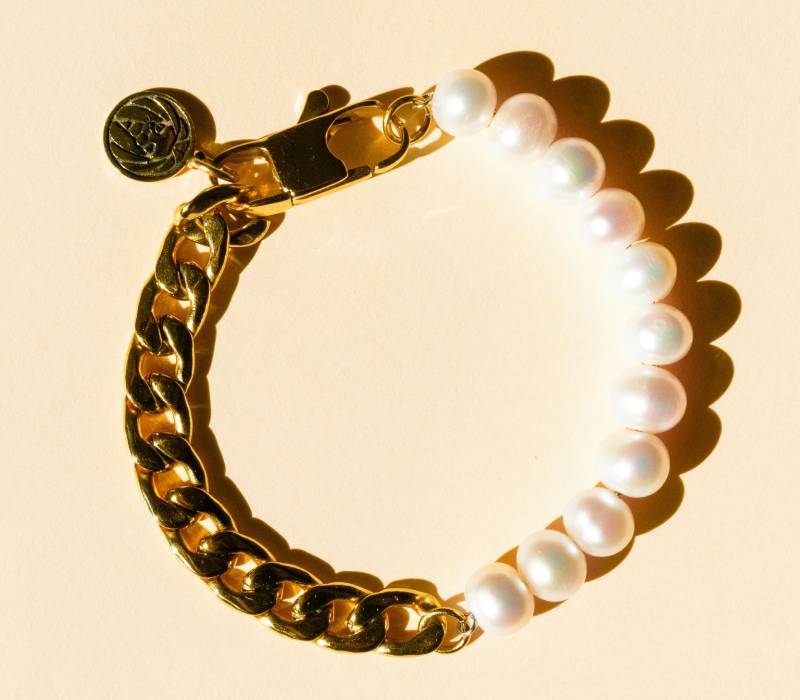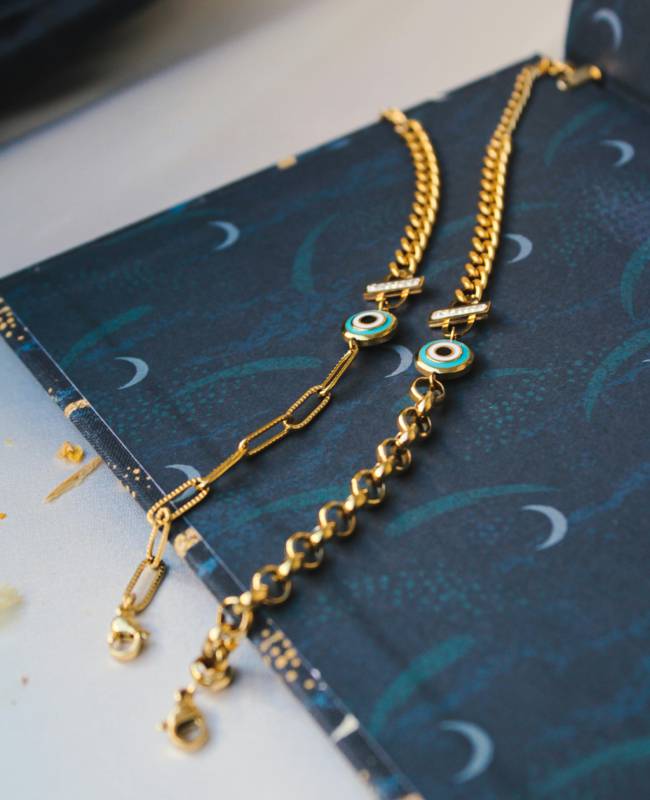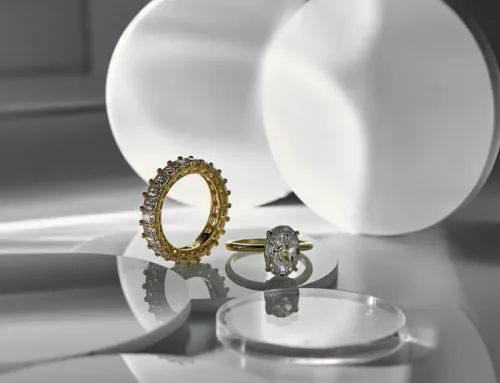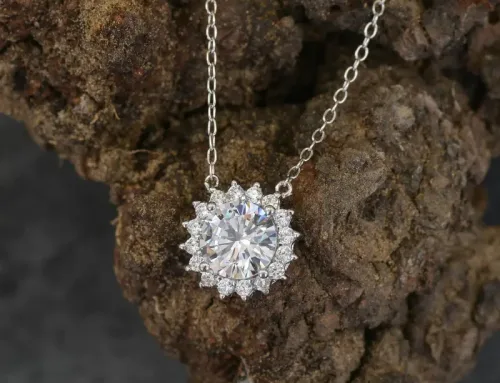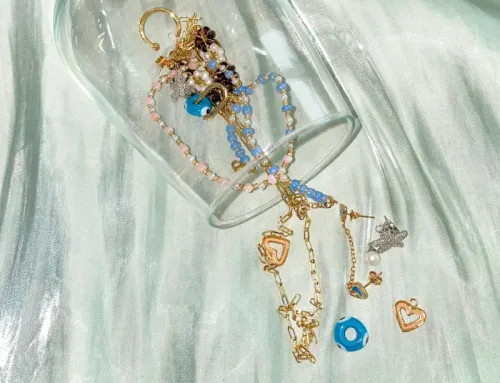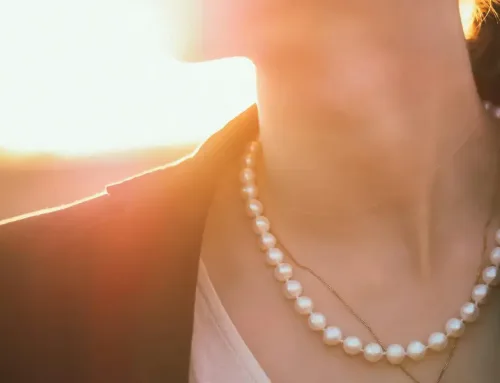Technical Challenges in Cross-style Silver Bracelets
Jewelry design is an evolving craft that requires combining artistry with jewelry-making techniques to create truly unique pieces that fit the characteristics of a jewelry brand or the personal style of a jewelry enthusiast. In modern jewelry making, combining silver chains with bead chains in bracelets or necklaces has become increasingly popular, providing a stunning contrast of texture and color, but also presents several challenges.
Material Differences and Connection Challenges
When combining silver chains with bead chains, the main challenge comes from the significant differences between the different materials. Silver is a strong, rigid metal, while bead chains are usually made of lighter, more flexible materials such as wood, pearls, glass or gemstones. Due to the differences in weight, flexibility and texture, designers need to carefully consider how to ensure that the final piece is both strong and beautiful.
In addition, when mixing different types of silver chains, such as bar chains, square chains and rope chains, each chain has different characteristics. Some chains are more delicate, while others are heavier and more complex. As a jewelry manufacturer or jewelry factory, you need to pay special attention to how these chains and beads are joined together to ensure that each part is securely connected and does not affect the overall design.
Choose the Right Connection Method
The method of joining the silver chain to the bead chain is crucial to ensure the durability and appearance of the jewelry. There are several common connection methods in custom jewelry production:
Soldering: Soldering is one of the most reliable methods of joining metal parts, ensuring that the silver chain is firmly fixed. However, because bead chains are often heat-sensitive, soldering is usually only used for the silver chain part, and the bead chain is fixed by other methods such as threading.
Screw connection: Screw connection is ideal for joining bead chains to silver chains. By using screws or threaded connectors, the bead chain can be firmly fixed to the metal chain while maintaining design flexibility. This is especially important for custom bracelets, where the bead chain may need to be replaced or adjusted according to personal preference.
Invisible connection: In order to achieve a seamless appearance, invisible connections are often used to connect silver chains to bead chains. These connectors are cleverly hidden from sight, allowing the jewelry to maintain a smooth and sleek design. For custom jewelry designs, especially those that use multiple types of silver chains, this approach helps maintain unity and balance in the design.
Combining Different Types of Silver Chains: When mixing different types of silver chains, special attention needs to be paid to how the chains are connected properly. For example, a square chain may need to be connected differently than a bar chain to ensure that they both look unified while maintaining their own unique characteristics. Whether it is through soldering or using screws, make sure the transition between the chains is smooth and natural.
Fine Craftsmanship and Polishing
In addition to the method of connection, the overall level of craftsmanship is also key to the final effect of the jewelry. In the jewelry factory, skilled craftsmen will carefully polish and trim the edges of the connecting parts to ensure that there are no sharp corners or rough spots. This meticulous process is crucial because it not only affects the appearance of the jewelry, but also directly relates to the comfort of wearing, especially when making custom bracelets.
For designs that include different types of silver chains, the craftsman needs to ensure that the transition between the chains is smooth and natural. It may be necessary to slightly adjust the curve of the chain or trim the edges of the connection to ensure that they connect smoothly and seamlessly. The result is a piece that looks like it was made of a single element rather than a piece of multiple parts.
Plating and Finishing
To enhance the durability and longevity of jewelry, plating and finishing are essential steps. Plating is the process of applying a thin layer of metal to the surface of jewelry to protect it from oxidation and discoloration and enhance its appearance. When a beaded chain is combined with a silver chain, plating helps ensure that all parts have a consistent finish, making the entire piece look smoother and more unified.
This is especially important for custom silver jewelry. Different types of silver chains have different finishes, and without a uniform plating process, the piece may appear inconsistent. Plating not only unifies the surface, but also provides an extra layer of protection for the jewelry, extending its life.
Another important finishing technology is nano-coating, which provides additional protection from scratches and environmental damage. This coating is especially important for mixed beaded and silver chain designs, as it ensures that the metal and beaded chain remain in perfect condition for long-term wear. The coating also adds a delicate layer of sheen to the jewelry, enhancing the overall visual effect.
Mix and Match Silver Chains in Custom Jewelry
Mixing different types of silver chains has become a popular jewelry design trend, adding a unique personality to the piece. Whether combining fine, thin chains with heavier chains, the key challenge is to ensure that the final design is balanced and harmonious. This mix and match approach gives designers more creative space, but it also requires careful planning to ensure that each chain complements the other.
When it comes to different types of silver chains in custom bracelet making, designers must pay special attention to their texture, weight, and overall visual effect. Each chain should complement each other, not steal the show. The transition between chains should be natural and smooth to maintain a unified feeling of the piece.
Conclusion
The combination of silver and bead chains, as well as the mixing of silver chains, provides endless creative possibilities for jewelry design, but also brings some technical challenges. As a custom jewelry factory or silver bracelet manufacturer, knowing how to effectively connect these materials can not only ensure the beauty of the jewelry, but also improve the durability of the work. From choosing the right connection method to ensuring fine craftsmanship to using advanced electroplating and surface treatment technologies, every link requires careful control.
Whether designing a custom bracelet for an individual customer or custom silver jewelry for mass production, overcoming these challenges is the key to creating high-quality, durable and beautiful jewelry. Through exquisite skills and appropriate technical means, jewellery craftsmen are able to create innovative and contemporary works, ingeniously combining traditional and modern design elements.

